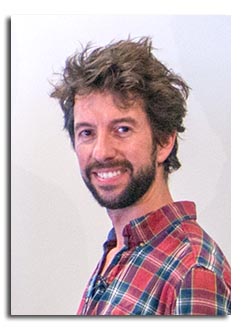
Abstract
The use of photoluminescence (PL) is a very sensitive means for the charge carrier density in silicon. In the past decade PL spectroscopy on silicon proved to be a versatile approach to characterise silicon using semiconductor diodes or CCD arrays for its detection. To address the low emission intensity of PL, which up to now prohibits its recording with high temporal resolution, I apply a single photon counting (SPC) approach and obtain an extraordinary sensitivity to the dynamics of excess charge carriers. The ability to detect the transient evolution of PL subsequent to a laser pulse from the nanosecond to second regime gives rise to the determination of low and high lifetimes of charge carriers on a wide injection regime, their diffusion to and recombination at surfaces, and their capture in trap levels.
In the seminar I discuss the implications of the high sensitiviy and the measurability of lifetime in general. This is followed by two applications which deliver the surface recombination velocity (SRV) and the electric properties of defect traps states.
The principle of the separation the bulk and surface recombination was introduced by Luke and Cheng by evaluation of an excitation pulse induced charge carrier decay. Now, we are able to measure the charge carrier decay by means of PL, which yields several advantages compared to other approaches, as the relation of PL and the charge carrier density is well known. Furthermore, by application of numeric simulations a rigorous data fitting algorithm becomes possible which renders obsolete the approximations and data reduction of Luke and Cheng’s analytic approach. The existence of asymetric trap levels with an energy level located in the band gap was postulated by Hornbeck and Haynes. We find that traps alter the recombination kinetics for a measurement of the transient PL intensity significantly. We exclusively observe electron capture and confirm two slow components in the PL decay curve. The decay characteristics point towards a multiple trapping mechanism.
Click here to see all available video seminars.
Click here to go to the SPREE HOMEPAGE.
Brief Bio
Born in 1984 in Tübingen, Germany, Friedemann Heinz graduated from the University of Freiburg, Germany, in physics in 2010. His dissertation thesis was conducted at the Fraunhofer ISE in Freiburg. In the course of his work he introduced theoretical, conceptual, and experimental advances in the field of microscopic spectroscopy on semiconductors for photovoltaics. At present he is working on defect physics on silicon using spectroscopic methods at the University of Freiburg.
